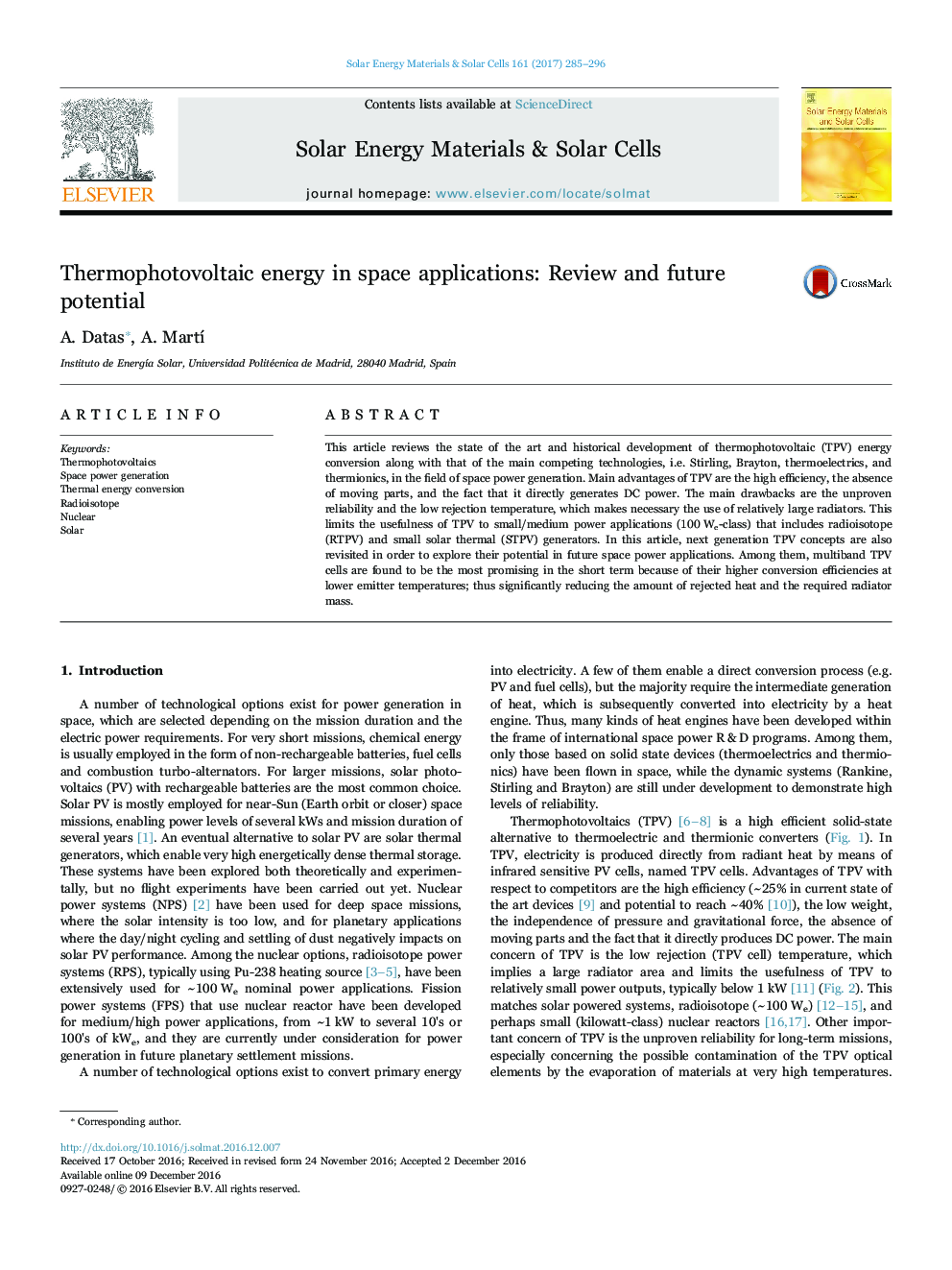| Article ID | Journal | Published Year | Pages | File Type |
|---|---|---|---|---|
| 6457037 | Solar Energy Materials and Solar Cells | 2017 | 12 Pages |
This article reviews the state of the art and historical development of thermophotovoltaic (TPV) energy conversion along with that of the main competing technologies, i.e. Stirling, Brayton, thermoelectrics, and thermionics, in the field of space power generation. Main advantages of TPV are the high efficiency, the absence of moving parts, and the fact that it directly generates DC power. The main drawbacks are the unproven reliability and the low rejection temperature, which makes necessary the use of relatively large radiators. This limits the usefulness of TPV to small/medium power applications (100Â We-class) that includes radioisotope (RTPV) and small solar thermal (STPV) generators. In this article, next generation TPV concepts are also revisited in order to explore their potential in future space power applications. Among them, multiband TPV cells are found to be the most promising in the short term because of their higher conversion efficiencies at lower emitter temperatures; thus significantly reducing the amount of rejected heat and the required radiator mass.
